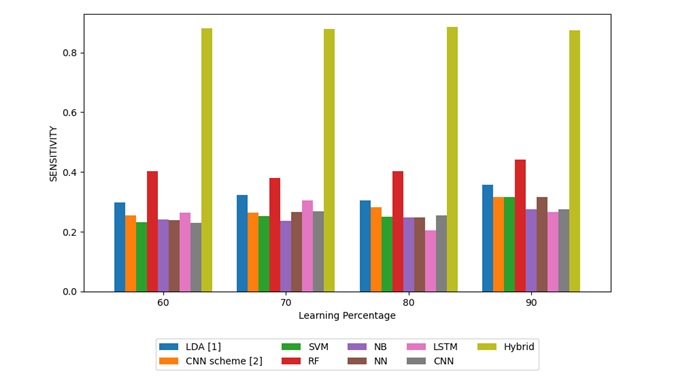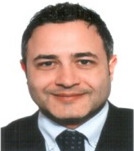Mapping Urban Heat Island Areas in Ibadan

DOI:
https://doi.org/10.54060/jmss.2023.25Keywords:
Urban Heat Island, Land Surface Temperature, Land Use Land Cover, Normalized Difference Vegetation IndexAbstract
Today, across the world many urban areas are experiencing higher temperatures compared to their surrounding rural areas; this difference in temperature is known as Urban Heat Island (UHI). UHI has created temperature hotspots in our urban centers which are known as UHI areas. This study maps Urban Heat Island areas in Ibadan using remotely sensed data for 1984, 2000 and 2011. Land Surface Tempera-ture (LST) and land use land cover characteristics of Ibadan urban were examined. Normalized Difference Vegetation Index (NDVI) was computed for the study area. Correlation analysis was performed, and the results reveals that a negative rela-tionship exist between LST and NDVI. Urban Heat Island (UHI) areas were defined using the land use land cover and LST for 1984, 2000 and 2011. The result further reveals that to map UHI areas, maximum LST and LULC conventionally regarded as UHI areas should be used, such as: high density residential areas, commer-cial/industrial area, and public/educational institution. The result presents an objec-tive approach adopted to give us a detailed view of places that fall under UHI areas and account for their change through the study years. Based on findings, possible mitigation measures as means of controlling the menace of UHI were highlighted for the study area.
Downloads
References
R.G. Barry, and R.J. Chorley, Atmosphere, weather and climate, 6th ed. London, U.K. and New York, NY, USA: Routledge, 1992.
L. Cao, P. Li., L. Zhang, and T.C. State, “Remote sensing image-based analysis of the relationship between Urban Heat Island and vegetation fraction,” in XXIst ISPRS Congr., Techn. Comm. VII, J. Chen, J. Jiang, and J. Van Genderen, Eds. Bei-jing, China, Jul. 2008, pp. 1379 -1384.
United Nations Department of Economic and Social Affairs/Population Division, “World urbanization prospects: The 2003 revision,” United Nations Digital Library, 2003. [Online]. Available:
https://digitallibrary.un.org/record/639679?ln=en [Accessed: Dec. 2, 2022].
O.O. Akiyode, “Urban environmental security in developing economy mega-city: A case study of Lagos, Nigeria,” J. Sustain. Develop. Africa, vol. 12, no. 5, Fall 2010.
A. Rahman, and M. Netzband, “An assessment of urban environmental issues using remote sensing and GIS tech-niques: An integrated approach. A case study: Delhi, India,” in Proc. Urban population-environment dynamics in the developing world: Case studies and lessons learned, A. De Sherbiniin, A. Rahman, A. Barbieri, J.C. Fotso, and Y. Zhu, Eds. 2009, pp. 182- 211.
O. Ojo, The climates of West Africa. London, U.K.: Heinemann Educational Books, 1982.
U. Ibeabuchi, “A study of Urban Heat Island areas in Lagos metropolitan area, Abeokuta and Ibadan urban using sat-ellite imagery,” M. Sc. thesis, Dept. of Geo., Univ. of Lagos, Lagos, Nigeria, 2010.
R.W. Christopherson, Geosystems: An introduction to physical geography, 5th ed. Indiana, IN, USA: Prentice hall, 2003.
J.R. Jensen, Remote sensing of the environment: An earth resources, 2nd ed. New Jersey, NJ, USA: Pearson Prentice hall, 2007.
J.G. Lockwood, World climatology: An environmental approach. London, U.K.: Edward Arnold, 1974.
X.L. Chen, H.M. Zhao, P.X. Li, and Z.Y. Yin,“ Remote sensing image-based analysis of the relationship between urban heat island and land use/cover changes,“ Rem. Sens. Environ., vol. 104, issu. 2, pp.133-146, Sept. 2006.
T.R. Oke, Boundary layer climates, 2nd ed. London, U.K. and New York, NY, USA: Routledge, 1987.
B.Y. Tam, W.A. Gough, and T. Mohsin, “The impact of urbanization and the urban heat island effect on day to day temperature variation,” Urban Climate, vol. 12, pp. 1-10, Jun. 2015.
H.E. Landsberg, The urban climate. New York, NY, USA: Academic Press, 1981.
T.R. Oke, “The energetic basis of urban heat island,“ Quart. J. Roy. Meteorol. Soc., vol. 108, issu. 455, pp. 1-24, Jan. 1982.
D. Quattrochi, J. Luvall, D. Rickman, M. Estes, C. Laymon, and B. Howell,“ A decision support information for urban landscape management using Thermal infrared data,“ Photo. Eng. Rem. Sens., vol. 66, no. 10, pp. 1195-1207, Oct. 2000.
M. Nikolopoulou, “Urban open spaces and adaptation to climate change,“ In Applied urban ecology: A global frame-work, M. Richter, and U. Weiland, Eds., U.K.: Blackwell Publishing, 2011, pp. 106–122.[Online].
https://doi.org/10.1002/9781444345025.ch9
M. Santamouris, C. Cartalis, and A. Synnefa, “Local urban warming, possible impacts and resilience plan to climate change for the historical center of Athens, Greece,“ Sustain. Cities Soc., vol. 19, pp. 281–291, Dec. 2015.
E. Sharifi, A. Sivam, and J. Boland, “Resilience to heat in public space: A case study of Adelaide, South Australia,” J. Environ. Plan. Manage., vol. 59, issu. 10, pp. 1833–1854, 2016.
T.R. Oke, G. Mills, A. Christen, and J.A. Voogt, Urban climate. Cambridge, U.K.: Cambridge University Press, 2017.
M.A.B. Romero, Architecture of the place. A bioclimatic vision of sustainability in Brasilia. Sao Paulo, Brazil: Nova Edi-torial Technique, 2011.
A. Qaid, H.B. Lamit, D.R. Ossen, and R.N.R. Shahminan, “Urban heat island and thermal comfort conditions at mi-cro-climate scale in a Tropical planned city,“ Energy Build., vol. 133, pp. 577–595, Dec. 2016.
I.D. Stewart, and T.R. Oke, “Local climate zones for urban temperature studies,” Bull. Ame. Meteorol. Soc., vol. 93, is-su. 12, pp. 1879–1900, Dec. 2012.
D. Li, and E. Bou-Zeid, “Synergistic interactions between urban heat islands and heat waves: The impact in cities is larger than the sum of its parts,” J. Appl. Meteorol. Climatol, vol. 52, issu. 9, pp. 2051–2064, Sep. 2013.
U. Ibeabuchi, and F. Oni, “An assessment of urban heat islands within Abeokuta area, South-western Nigeria,” Lagos J. Geo. Issu., vol. 1, issu. 1, pp. 25-42, 2013.
O.G. Ogunremi, Ed. Ibadan: A historical, cultural and socio-economic study of an Africa city. Lagos, Nigeria: Oluyole Club, 2000.
Federal Republic of Nigeria Official Gazette, “Legal notice on publication of 2006 census final results,” Federal Gov-ernment Printer, Abuja, Nigeria, FGP16/22009/10,000 (OL02), Feb. 2, 2009.
J.A. Sobrino, N. Raissouni, and Z-Li, “A comparative study of land surface emissivity retrieval from NOAA data,” Rem. Sens. Environ., vol. 75, issu. 2, pp. 256– 266, Feb. 2001.
B.J. Choudhury, N.U. Ahmed, S.B. Idso, R.J Reginato, and C.S.T. Daughtry, “Relations between evaporation coefficients and vegetation indices studied by model simulation,” Rem. Sens. Environ., vol. 50, issu. 1, pp. 1–17, Oct. 1994.
J.W. Rouse Jr., R. Haas, J. Schell, and D. Deering, “Monitoring vegetation systems in the great plains with erts,” in 3rd Earth Res.Technol. Satell. Symp., Greenbelt, WA, USA, Dec. 10-14, 1973, pp. 301-317.
Y-C. Weng, “Spatiotemporal changes of landscape pattern in response to urbanization,” Land. Urban Plan., vol. 81, is-su. 4, pp. 341-353, Jul. 2007.
N. Turkoglu, “Analysis of urban effects on soil temperature in Ankara,” Environ. Monitor. Assess., vol. 169, pp. 439-450, Oct. 2010.
H.M. Mosammam, J.T. Nia, H. Khani, A. Teymouri, and M. Kazemi, “Monitoring land use change and measuring urban sprawl based on its spatial forms: The case of Qom city,” The Egypt. J. Rem. Sens. Spac. Sci., vol. 20, issu. 1, pp. 103-116, Jun. 2017.
Q. Weng, D. Lub, and J. Schubring, “Estimation of land surface temperature-vegetation abundance relationship for urban heat island studies,” Rem. Sens. Environ., vol. 89, issu. 4, pp. 467-483, Feb. 2004.
S. Khandelwal, R. Goyal, and A. Mathew, “Assessment of land surface temperature variation due to change in eleva-tion of area surrounding Jaipur, India,” The Egypt. J. Rem. Sens. Spac. Sci., vol. 21, issu. 1, pp. 87-94, Apr. 2018.
W.D. Solecki, C. Rosenzweig, L. Parshall, G. Pope, M. Clark, J. Cox and M. Wiencke, “Mitigation of the Heat Island ef-fect in urban New Jersey,” Glob. Environ. Chan. Part B: En¬viron. Haz., vol. 6, issu. 1, pp. 39-49, Jul. 2005.
Z. Wang, W. Xing, Y. Huang, and T. Xie, “Studying the urban heat island using a local climate zone scheme,” Pol. J. En-viron. Stud., vol. 25, no. 6, pp. 2609-2616, Jun. 2016.
S. Ma, A. Pitman, M. Hart, J.P. Evans, N. Haghdadi, and I. MacGill, “The impact of an urban canopy and anthropogenic heat fluxes on Sydney‘s climate,” Int. J. Climatol., vol. 37, issu. S1, pp.255-270, Feb. 2017.
U.S. Environmental Protection Agency, “Urban heat island basics,” Reducing urban heat islands: Compendium of strat-egies, 2008. [Online]. Available: https://www.epa.gov/heat-islands/ heat-island-compendium [Accessed: Dec. 2, 2022].
J.M. Ali, S.H. Marsh, and M.J. Smith, “Modelling the spa¬tiotemporal change of canopy urban heat islands,” Build. En-viron., vol. 107, pp. 64-78, Oct. 2016.
K. Liu, H. Su, X. Li, W. Wang, L. Yang, and H. Liang, “Qu¬antifying spatial-temporal pattern of urban heat island in Bei-jing: An improved assessment using land surface temperature (LST) time series observations from LANDSAT, MODIS, and Chine¬se new satellite GaoFen-1,” IEEE J. Select. Top. Appl. Earth Observ. Rem. Sens., vol. 9, no. 5, pp. 2028-2042, May 2016.
D.X. Tran, F. Pla, P. Latorre-Carmona, S.W. Myint, M. caetano, and H.V. Kieu, “Characterizing the relationship between land use land cover change and land surface temperature,” ISPRS J. Photo. Rem. Sens., vol. 124, pp. 119-132, Feb. 2017.
A.M. Rizwan, Y.C.L. Dennis, and C. Liu, “A review on the generation, determination and mitigation of urban heat is-land,” J. Environ. Sci., vol. 20, issu. 1, pp. 120–128, Jan. 2008.
S. Yamashita, K. Sekine, M. Shoda, K. Yamashita, and Y. Hara, “On relationships between heat island and sky view factor in the cities of Tama river basin, Japan,” Atmos. Environ. (1967), vol. 20, issu. 4, pp. 681–686, 1986.
K.C. Goh, and C.H. Chang, “The relationship between height to width ratios and the heat island intensity at 22:00h for Singapore,” Int. J. Climatol., vol. 19, issu. 9, pp. 1011–1023, Jun. 1999.
S. Kumar, T. Prasad, N.V. Sashidharan, and S.K. Nair, “Heat island intensities over Brihan Mumbai on a cold winter and hot summer night,” Maus., vol. 52, no. 4, pp. 703–708, Oct. 2001.
J. Unger, Z. Sümeghy, and J. Zoboki, “Temperature cross-section features in urban area,” Atmos. Res., vol. 58, issu. 2, pp. 117–127, Jul. 2001.
P.I. Figuerola, and N.A. Mazzeo, “Urban–rural temperature differences in Buenos Aires,” Int. J. Climatol., vol. 18, issu. 15, pp. 1709–1723, Dec. 1998.

Downloads
Published
How to Cite
CITATION COUNT
Issue
Section
License
Copyright (c) 2023 Feyi Oni, Uwadiegwu Ibeabuchi

This work is licensed under a Creative Commons Attribution 4.0 International License.
























